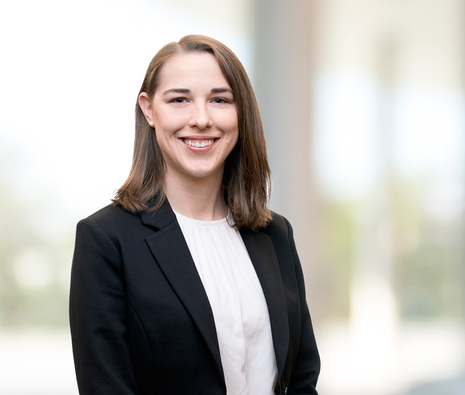Hikma V. Vanda Exaggerates Treatments' Patent Eligibility
The article below was originally published in IPLaw360 on March 15, 2019.
Method-of-treatment patents are one of the three types of pharmaceutical patents listed in the Orange Book of the U.S. Food and Drug Administration for a branded drug — the other two being active ingredient and formulation/composition patents. As such, when a generic pharmaceutical company files an abbreviated new drug application seeking approval to market a generic version of a particular branded drug, it must address any Orange Book listed method-of-treatment patent in its ANDA application.
A Paragraph IV filing of the ANDA, in turn, often triggers a patent infringement lawsuit between the Orange Book patent owner and the ANDA filer, and the outcome of that suit often determines when the generic drug will be available in pharmacies. Whether these method-of-treatment patents will be strongly susceptible to a patent ineligibility challenge under Section 101 of the Patent Act, therefore, is a matter of some importance to all pharmaceutical companies — both on the brand side and the generic side.
This issue is generally at stake in the petition for a writ of certiorari recently filed by Hikma Pharmaceuticals USA Inc. The case is Hikma v. Vanda Pharmaceuticals Inc.[1]
Hikma requests that the U.S. Supreme Court address the question of “whether patents that claim a method of medically treating a patient automatically satisfy Section 101 of the Patent Act, even if they apply a natural law using only routine and conventional steps.”[2] This question is perhaps founded on an exaggerated interpretation of the Federal Circuit’s decision in Vanda v. West-Ward Pharmaceuticals International Ltd,[3] as more than readily detailed in Vanda's opposition brief.[4] It is interesting to note, however, that Vanda’s opposition brief also pointedly downplays any wide-reaching implications of the case, even in contrast to Vanda’s recent public statements.
So does the Vanda ruling amount to a "free pass" under Section 101 for method-of-treatment claims, a "fact-specific" decision based on the faithful application on Section 101 precedents, or possibly (and likely) some middle ground? The authors respectfully submit that Vanda is a fact-specific ruling by the Federal Circuit that is attempting to find some middle ground in the Supreme Court’s Section 101 precedents.
In Vanda v. West-Ward, the Federal Circuit determined that Vanda’s ’610 patent claims were not directed to a law of nature, but instead directed to an application of that law, and were therefore patent-eligible.[5] The Federal Circuit was careful to set forth the differences between the claims of the ’610 patent and those of Section 101 precedents, including Mayo Collaborative Services v. Prometheus Laboratories Inc.,[6] Rapid Litigation Management Ltd. v. CellzDirect Inc.,[7] and Association for Molecular Pathology v. Myriad Genetics Inc.[8]
Specifically, the Federal Circuit held that in Mayo, the claims were not directed to a novel treatment method, but instead directed to a diagnostic method based on naturally occurring relationships.[9] In contrast, it found in Vanda, the claims were a new use of an existing drug that required a treatment step.[10]
This because the Mayo claims fail to teach the use of the natural relationship, while the claims in Vanda do not encompass the use of a natural relationship but are directed to specific treatment steps.[11] Thus, Vanda’s ’610 patent claims were found patent eligible as “[t]he inventors recognized the [naturally occurring] relationship … but that is not what they claimed. They claimed an application of that relationship.”[12] Shortly after this decision, the U.S. Patent and Trademark Office issued a memorandum, in June 2018,[13] relating to the evaluation of method-of-treatment claims.
While Hikma may be incorrect to claim that Vanda stands for the proposition that all method-of-treatment claims would be “automatically” patent eligible under Section 101, there is a valid point to be made that the June 2018 memorandum elevates the Vanda decision beyond the specific facts of the ’610 patent.
The June 2018 memorandum claimed that the then-current subject matter eligibility guidance and examples were consistent with the Vanda decision, but also highlighted two main takeaways from Vanda: (1) that method-of-treatment claims should be found patent-eligible under Step 2A when they practically apply a natural relationship and (2) nonroutine or unconventional steps are not necessary in determining whether claims practically apply a natural relationship.
While the June 2018 memorandum noted that future guidance may (and indeed, did) issue, the issuance of the June 2018 memorandum in light of the Vanda decision with respect to method-of-treatment claims emphasizes the broader importance of the ruling. As Hikma notes in its reply to Vanda’s opposition brief, the USPTO's January 2019 subject matter eligibility guidance[14] is not inconsistent with the June 2018 memorandum. Furthermore, the availability for public comments and ever-changing nature of the January 2019 guidance are far from convincing evidence that Vanda is a poor vehicle for the Supreme Court’s further evaluation of Section 101 eligibility.
The question remains: Do the Vanda decision and post-Vanda guidance from the USPTO open the floodgates for method-of-treatment claims to pass the muster of Section 101 at the USPTO’s revised Step 2A? As a result, will there be a rush of diagnostic claims redrafted as method-of-treatment claims? And if so, is this really the crisis that Hikma alludes to in its petition?
The Vanda decision nowhere suggests that there is automatic Section 101 eligibility for method-of-treatment claims, as put forth by Hikma. Nor is Hikma’s position consistent with subsequent USPTO guidance. This type of sweeping “automatic” directive is absent in the Vanda ruling, in which the Federal Circuit instead explains that its finding of patent eligibility is consistent with Supreme Court precedent.[15]
Further, the June 2018 memorandum does not advocate the eligibility of all method-of-treatment claims without scrutiny under Section 101. To the contrary, it details an approach that differentiates claims that apply natural relationships from those that are "directed to" them. The subsequent revisions in the January 2019 guidance likewise instruct that a claim that recites a judicial exception and integrates that judicial exception into a practical application of the exception is "directed to" that judicial exception.[16]
Notably, this recent guidance does not just extend to method-of-treatment claims, but to all claims which recite a judicial exception. Analysis under revised Step 2A, prong two, can include several considerations which help determine if a judicial exception has been integrated into a practical application, including “an additional element that applies or uses a judicial exception to effect a particular treatment or prophylaxis for a disease or medical condition.”[17] This example references both Vanda and the USPTO June 2018 memorandum, which indicates that Vanda is at least an exemplary case in regard to the USPTO’s clarified Section 101 guidance.
Nevertheless, the 2019 revised guidance also relies on many other cases in forming its nonexclusive list of conditions for integration of judicial exceptions into practical applications. It would be incorrect to assume that this revision is a direct result of solely the Vanda decision, as a general need for clarification and greater predictability in subject matter eligibility application was needed, regardless.
Even if there is an increase in the number of method-of-treatment claims following Vanda, these claims will not escape scrutiny under Section 101 and will face further, significant evaluation under Sections 102 and 103. And if Vanda plays a role in considering Section 101 application or interpretation at any venue, perhaps it will bring about some always appreciated predictability in subject matter eligibility.
Sasha Rao is a partner at Maynard & Gale PC and chairs the firm's intellectual property practice.
Erin Gaddes is a patent agent at the firm.
The opinions expressed are those of the author(s) and do not necessarily reflect the views of the firm, its clients, or Portfolio Media Inc., or any of its or their respective affiliates. This article is for general information purposes and is not intended to be and should not be taken as legal advice.
[2] Id. Pet. at Question Presented.
[3] Vanda Pharms. Inc. v. W.-Ward Pharm. Int’l Ltd. 887 F.3d 1117 (Fed. Cir. 2018).
[4] https://www.supremecourt.gov/DocketPDF/18/18-817/88029/20190212132338232_Brief%20in%20Opposition.pdf
[5] Vanda, 887 F.3d at 1135.
[6] Mayo Collaborative Servs. v. Prometheus Labs., Inc. , 566 U.S. 66 (2012).
[7] Rapid Litig. Mgmt. Ltd. v. CellzDirect, Inc., 827 F.3d 1042 (Fed. Cir. 2016).
[8] Association for Molecular Pathology v. Myriad Genetics, Inc., 569 U.S. 576 (2013).
[9] Vanda, 887 F.3d at 1134.
[10] Id. at 1135.
[11] Id. at 1135.
[12] Id.
[14] 2019 Revised Patent Subject Matter Eligibility Guidance, 84 Fed. Reg. 50 (Jan. 7, 2019).
[15] Vanda, 887 F.3d at 1134.
[16] 2019 Revised Patent Subject Matter Eligibility Guidance, 84 Fed. Reg. 50 (Jan. 7, 2019).
[17] Id. at p. 20.
Related Materials
About Maynard Nexsen
Maynard Nexsen is a full-service law firm of nearly 600 attorneys in 31 locations from coast to coast across the United States. Maynard Nexsen was formed in 2023 when two successful, client-centered firms combined to create a powerful national team. Maynard Nexsen’s list of clients spans a wide range of industry sectors and includes both public and private companies.








